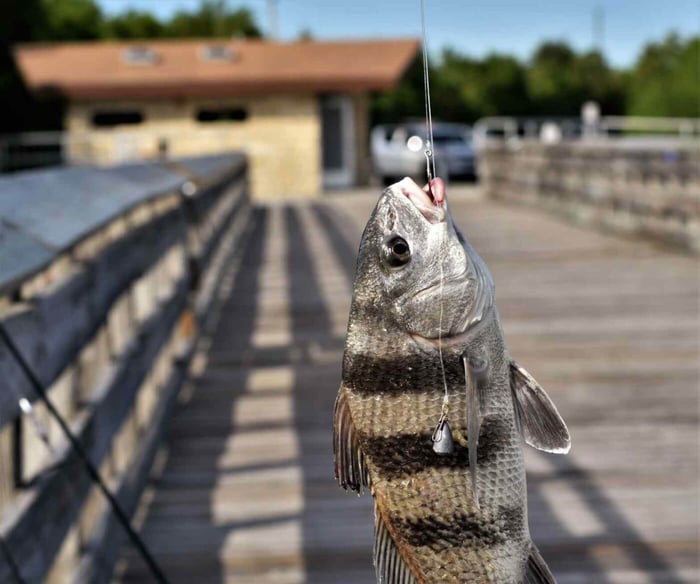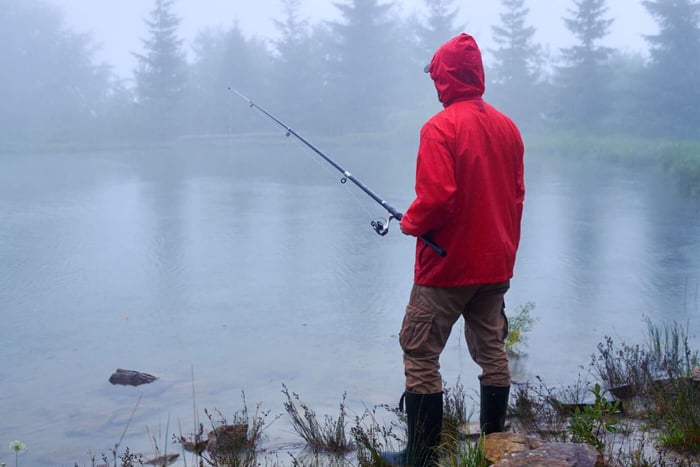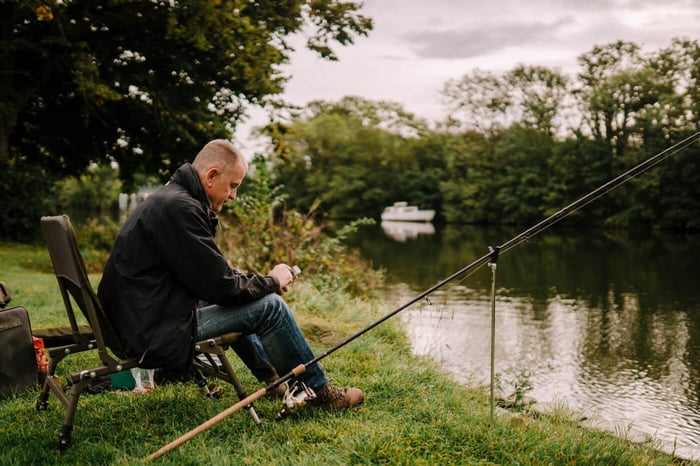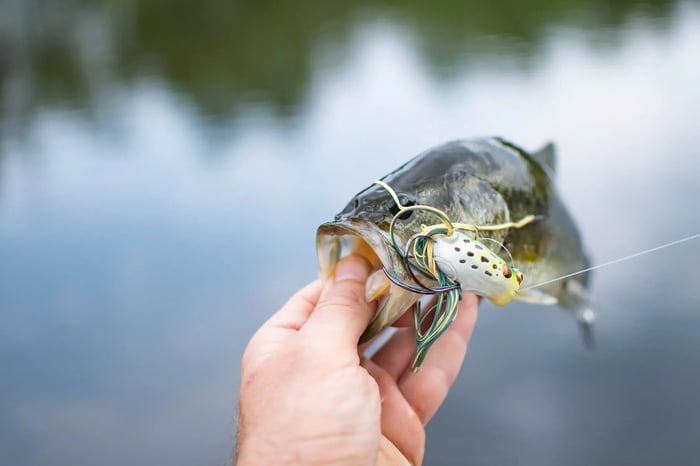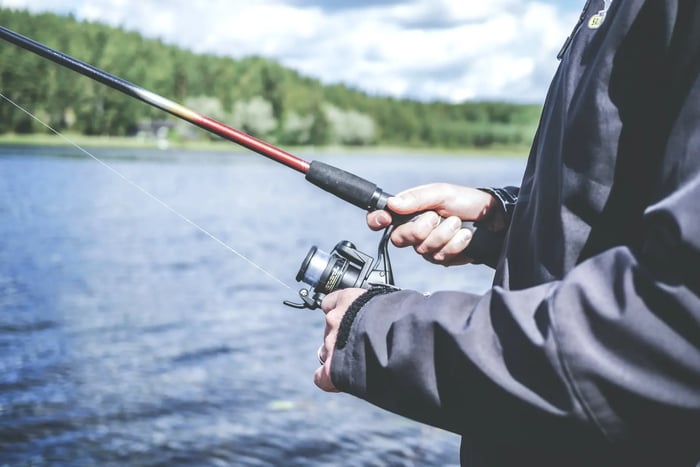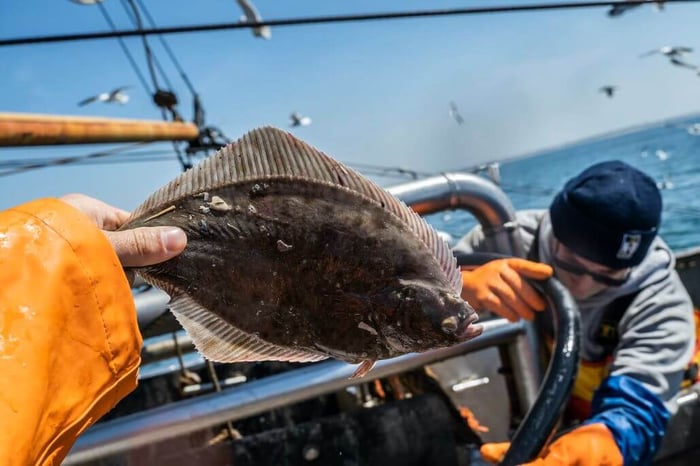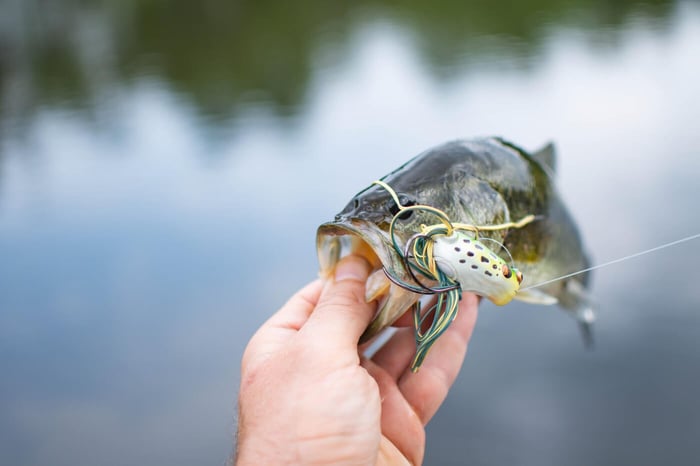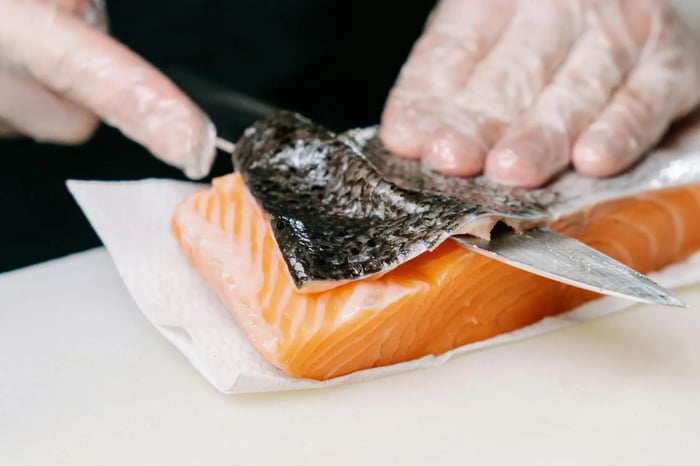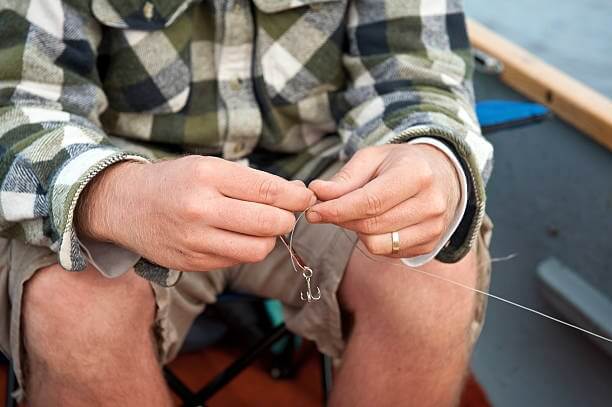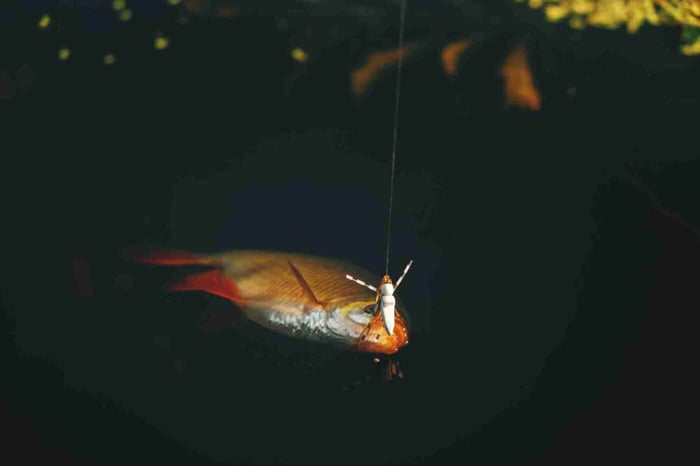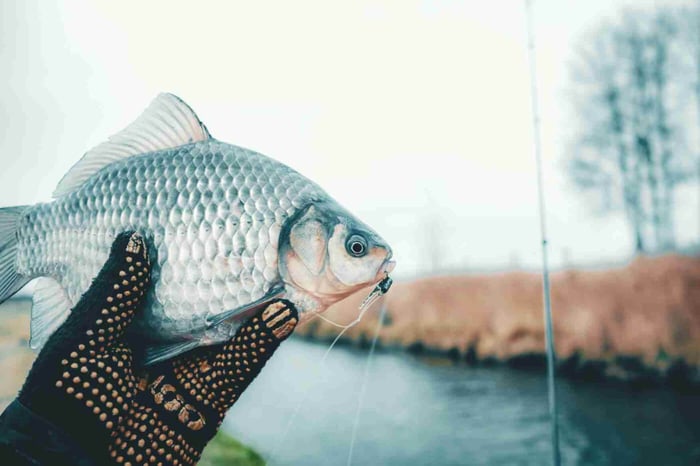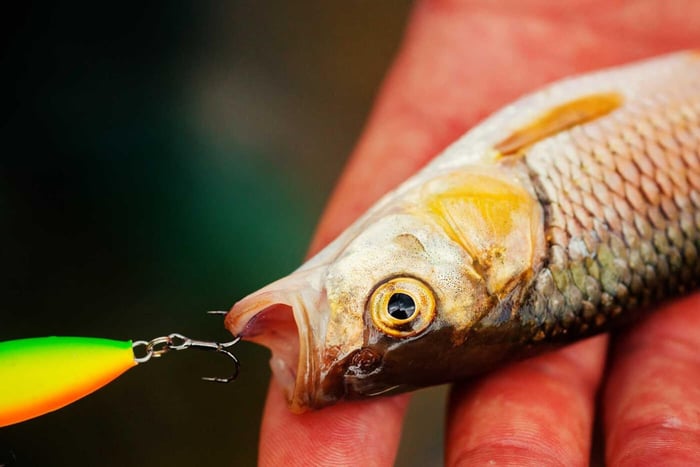With all your strength and energy, you are finally about to catch your biggest trophy so far!
All of a sudden, your line snapped. It got pulled accidentally, or the hook straightened. Your chance for a great bite just slipped away from your rod. While this instance is bound to happen, you want to avoid always being defeated in this game.
Whether it's the size of the fish, the line, or the hook, it is essential to ensure these key elements not just to have a successful bite on your lure but a giant trophy bass in your boat.
Below are the skills you need to help you hook more fish, set and measure the drag on the fishing reel, and keep them on the line. Now is the time to take home those trophies!
What is a drag in a fishing reel?
Fish can draw lines off the spool without breaking it thanks to a feature of fishing reels called drag. The drag is a brake, allowing your reel to play out a line slowly. Big fish can pull and battle if the drag is set properly, but they won't break your line.
You need to know the line on your reel to set your drag appropriately. How you set the drag depends on the type and strength of your line. To locate the drag adjustment, you must also determine the type of reel you are using.
Types of Fishing Lines and Their Strength
Manufacturers assess every type of fishing line according to its breaking strength. It lists the breaking strength in pounds. Strictly speaking, the line should be referred to as the X-pound test line when it breaks. Anglers typically omit the word "test" and refer to the ten-pound line (or fifteen-pound line, thirty-pound line, etc.).
To set the drag, it's crucial to understand the test strength of your line.
Monofilament Line
Nylon monofilament fishing line is the most popular type. Monofilament is your type of line if you are still determining.
A single nylon strand makes up this line, often known as mono. When the fish tugs on the mono line, it will lengthen since it is stretchy. This stretch increases your drag while assisting in line protection.
Monoline drag is typically between 20 and 25 percent of the rated breaking strength. For different line strengths, the drag can be adjusted appropriately.
- For line up to the 20-pound test, the drag should be set at 20% of the breaking strength.
- Set the drag at 25% of the breaking strength for the line with a rated breaking strength of 30 to 50 pounds.
- You can set the drag as high as 30% for mono with a breaking strength of at least 80 pounds.
Braided Line
A braided line is the other popular type of line. The braided line seldom ever stretches. Because it's much simpler to feel bites with this type of line, some fishermen prefer it. This has the drawback of making the line stiffer and considerably less forgiving. Unlike the monofilament line, the braided line should have a lower drag setting.
Look up the breaking strength on the manufacturer's website if you use a braided line. The poundage rating on a braided line is frequently advertised as a reflection of its thickness rather than its real strength.
For instance, while having a breaking strength of more than 20 pounds, the braided line labeled as the 20-pound line is the same thickness as the 20-pound test monofilament.
Since it will be too low, you'll need help landing fish if you set your drag based on the 20-pound thickness. Before experimenting with the drag, confirm the breaking strength.
- Drag should be set at 15% of breaking strength for braided lines with a breaking strength of 20 pounds or less.
- Drag settings for braided lines in the 30 to 65-pound range should be 20% of the breaking strength.
- Drag should be 25% on lines with a breaking strength of 65 pounds or greater.
Measuring the Drag

Measuring the present drag is the first step in setting the drag. Having a companion to assist you will make this process easier. It would help if you also had a hanging scale with a hook in addition to your rod and reel. Your rod's line guides should be used to thread the line, and the end should be tied into a loop. Snag the scale's hook in the loop at the line's end.
As soon as everything is ready, ask your companion to hold the scale while you pull up on the rod to simulate fighting a fish. The rod should be bent, and the handle should be at a 45° angle. Doing this allows you to simulate the strain a large fish will put on your drag.
This test must replicate the act of actually reeling in a fish. Keep things as realistic as you can because the flexibility of the rod and the stretch of the line will affect the proper drag setting. Don't just yank a few feet of line out of the reel and claim that's a reliable measurement.
Pull continuously until the drag begins. You should eventually hear the reel grind and feel some line pulling away from the reel. This indicates that the drag is effective. As the drag started, the person holding the scale should note the reading. If the drag begins at the appropriate weight, you are done. If not, take note of the weight and modify your reel's drag.
Setting the Drag Without a Scale
You can still set your drag successfully without a scale. Search your home for goods with known weights, such as canned food, milk, or water bottles (8.4 pounds for a gallon of milk and 8.3 pounds for a gallon of water) or other items. Fill a bag with as many items as you need to match the weight you want. Tie a line to the handles of the bag and pull away. This will enable you to adjust the drag's weight.
If you take fishing seriously, you should also purchase a spring scale or a digital scale with a hook. To keep track of the size of the fish you have caught, you can quickly and conveniently weigh the catch. It's absolutely up to you whether you describe the weights precisely, but it makes your stories seem more credible if you can show the size of the fish you caught by pointing to a scale.
Adjusting the Drag
It's time to adjust the drag at this point. On your reel, there is a dial that controls the drag. The precise location and setting mechanism will vary depending on your reel type. Here are some directions and suggestions about identifying each type of reel.
Spincast Reels
The most popular reels are spin cast reels, particularly in lower price ranges. Because of their closed face, there is no way to watch the line spool on spin cast reels. When you're ready to cast, press the button on the back of these reels with your thumb and then release it to send the line out. While casting, the spool is free; after setting it in position with a small handle crank.
Look for a dial on the spin cast reel to change the drag. It should be right next to the line release button. You can modify the drag with this dial. You can change the drag by turning it to the right or left.
Spinning Reels
Spinning reels hold the line on a spool that is visible under the rod. The spool is stationary because its center is parallel to the rod. These rods are cast by removing a wire bail, gripping the line against the rod with your fingertip, then letting go of the line as you cast your lure into the water. It would help if you closed the bail to stop the line from continuing to play out.
On the front-of-the-line spool of a spinning reel is a knob or dial for adjusting drag. The knob on most spinning reels features a small bar or grip across the front. Increase the drag by turning the knob clockwise while facing the reel. To lessen drag, rotate it in the opposite direction.
Baitcasting Reels
In addition to having an exposed spool for the line, baitcasting reels also contain a rotating spool. This spool's center is parallel to the length of the rod. You can cast bait reels using your thumb as a brake on the line spool.
This type of reel's drag is adjusted using a star-shaped dial inside the crank handle. Turn the dial clockwise to increase drag and counterclockwise to decrease drag, just like the spinning reel.
Lever-Drag Reels
High-end bait casters called lever-drag reels have a lever instead of a star for adjusting the drag. Deepwater fishermen use these reels to catch big fish like tuna, marlin, and barracuda. The little dial on the side of the reel can be used to pre-set the lever for maximum drag. Turn the dial clockwise for more drag and counterclockwise for less, just like with other drags. This will be the most drag that the reel can support.
In contrast to other reels, Lever-drag reels allow you to change the drag instantly. The lever has three positions: free spool, strike, and maximum drag. The free spool option allows the reel to spin freely for accurate casting. While the maximum drag setting allows you to raise the drag as high as is secure, the strike setting allows fish to pull a small line from the reel.
Making the Adjustment
Regardless of the reel you are using, the drag should start to slide as soon as the load on the line reaches the proper weight. Once you get the drag appropriately positioned, experiment with the adjustment. The drag may seem too low but trust the measurements. If the drag is set too high, fish will sever your line. If the drag is higher, landing fish will take longer, but you will succeed.
Using the Drag to Catch Big Fish
The fish you hook won't usually fight against your drag. Keep in mind the following steps while landing little fish:
- Maintain a tight line. The fish may spit the hook out if the line is too loose. To keep the fish hooked, maintain line tension at all times.
- Maintain the angle of your rod. The rod's curvature aids in maintaining line tension. It also acts as a spring to cushion the fish's pulling and safeguard the line.
- When there is time, reel furiously if the fish moves toward you or releases stress. It keeps the line moving quickly and brings you one step closer to winning the jackpot.
- When you can, pull. Lower your pole if the fish briefly stops biting while you reel in line. Pull the pole up to draw the fish in once it is flat. When you can, repeat this, but if the fish is swimming away, don't try to stop it.
How to Handle a Big One
For fish that don't use drag, the above techniques are effective. Pumping the rod while reeling in the fish is possible. Huge fish won't respond to such a strategy. You will need to exhaust a fish that is large enough to battle your drag before you can reel it in. You let the rod and the drag fight for you to win genuine awards.
- Maintain a high rod and a tight line. No matter what size the fish is, the rule still applies.
- When you can, reel in to keep the line tight and draw the fish in if it starts to let loose.
- Avoid battling the drag. Only try to reel the line in or pump the rod if the fish is ripping it off the reel. Just let the fish battle and the drag work.
- Understand when to break the rules. It's time to use additional force if the fish is on the verge of entering dense cover that will snarl the line. Or, you can hold the line and pole with your hand and tighten the drag manually. The friction created by holding the line to the pole will cause the fish to move more slowly. Pull as hard as you like because there is no need to protect the line if the fish has a chance of breaking it nonetheless.
- Prepare your net or gaff. Anything you use to land the fish should be accessible so you can manage it as soon as it approaches.
When Drag Becomes Your Enemy
The drag can work against you in some circumstances. A lure usually becomes tangled up on something other than a fish. The only options are available when your hook snags onto anything big are to tug the line firmly or cut it. A properly adjusted drag prevents the line from snapping in response to powerful pulls.
Pulling firmly enough to snap the line when your only options are yanking, or cutting isn't all that horrible. You can always manage to get your lure free. At least you tried if you can't. No worse off than if you had severed your line, you are not.
Don't try to change your drag if you force a lure free of a snag. Just leave it alone because there's a significant probability you won't be able to reset it properly without a scale. Try these suggestions instead to remove a stuck lure:
- To prevent the line from separating from the reel, hold it firmly against the rod. The drag won't engage by doing this, allowing you to pull more forcefully.
- Rapidly pump the rod up and down. Faster than fighting a fish, though.
- Also, move the rod from side to side. A variable pull direction can occasionally make a difference and aid in the lure slipping free.
- Directly pull on the line while setting the rod down. This is the greatest technique to apply much pressure to the line. To prevent cutting your hand on the line, wrap the line around a sturdy object, such as a pair of pliers or a thick stick. Direct line pulling will either damage the line or cause the hook to fall out.
Note: Pulling a stuck lure requires caution. The Monofilament line is elastic, and pulling on it loads the line. When the hook finally releases, it frequently comes flying back at you. The lure will fly over your face rather than at it if you pull the rod at a 45° angle at 2 or 10 o'clock instead of noon. Anglers can get hooked by flying treble hooks just like fish can. When you pull on the line, be careful.
Do not disregard the drag!
Although it's relatively easy, setting your drag is frequently disregarded. You need to set it once, and it's simple to accomplish. One of those things you can complete when you get a new reel (or change the line on an existing reel) and then completely forget about. When you have the adjustment properly set, leave it alone.
Try to avoid messing with your drag once it has been set. If there is an insufficient drag, fish may strip the line off the reel and enter dense cover, breaking the line. The extremely large fish will break your line and escape if there is too much drag. A common fishing tale is "the one that got away," but with the drag properly placed, the tale becomes "look at this beauty I caught."



